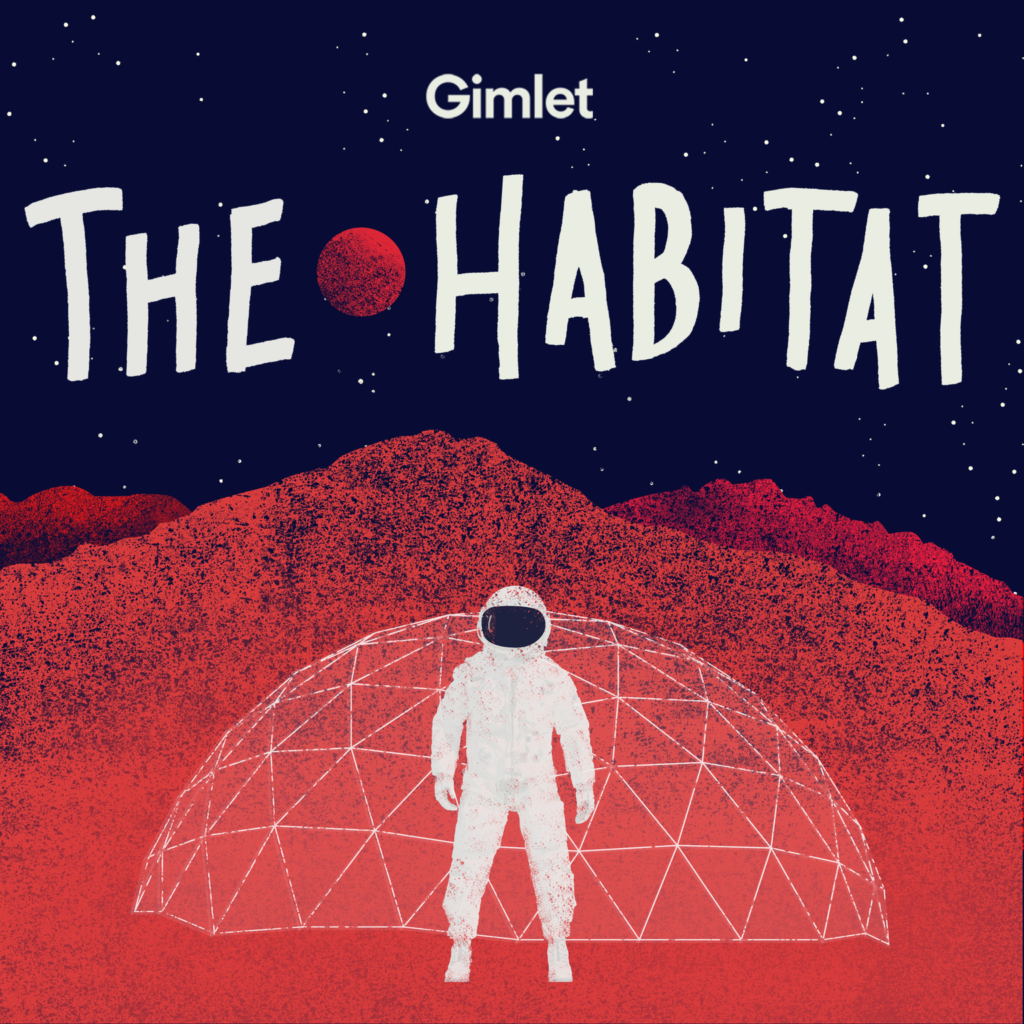Podcast Series Chronicles ‘Mission to Mars’ in Hawai‘i
Podcast company Gimlet Media is launching a new series, The Habitat, on Wednesday, April 18, 2018.
The docu-series chronicles the lives of six “imitation astronauts” secluded in the Hawai’i Space Exploration Analog and Simulation (HI-SEAS) Mars habitat located on the slopes of Mauna Loa, a remote volcanic mountain on the Big Island.
The volunteers are secluded in an “imitation Mars” habitat where they worked as imitation astronauts for one very real year.
The featured crew is from Hi-SEAS 2015-16 and entered August of 2015. The crew is apprised of six volunteers from all over the world and a variety of backgrounds: a doctor, a physicist, an architect, an aerospace engineer, a biologist and soil scientist (see photos and biographies below).
Their goal is to help researchers understand what life might be like on the red planet—and plan for the day when the dress rehearsals are over, and we blast off for real.
Host Lynn Levy has been documenting this experiment from the moment the crew set foot in their habitat, communicating with them through audio diaries that detail their discoveries, their frustrations, and their evolving and devolving relationships with each other.
From those diaries, comes an addictive serialized podcast: the true story of a fake planet, The Habitat.
Listeners can access The Habitat on all major podcast apps and at http://gimletmedia.com/the-habitat. All seven episodes of the series will be available starting tomorrow, Wednesday, April 18, 2018.
Podcast company Gimlet Media is launching a new series, “The Habitat,” on Wednesday, April 18, 2018.
BIOGRAPHIES
Carmel Johnston, a soil scientist from Whitefish, Montana, is the missions crew commander. Her previous research focused on the effects of permafrost thaw on trace gas emissions in peatlands. Her interest in global food production and sustainability lead her to HI-SEAS to research food production in Mars simulation. She has a bachelor of science in soil and water science and a master in science in land resources and environmental sciences from Montana State University.
Sheyna Gifford has worked on research projects in astrophysics, neuroscience and psychology and is a contributor to NASA educational websites, a medical writer, and an advocate of STEM education. Her previous work includes working on the HESSI satellite at Space Science Laboratories. She holds a bachelor of science in neuroscience and english, a master of clinical laboratory science and biotechnology, a master of science in journalism, a doctor of medicine and is currently earning a master of business administration.
Tristan Bassingthwaighte is currently a doctor of architecture candidate at UH Mānoa. He is in the final stage of completing his master’s degree in architecture from Tongji University in Shanghai, where he studied abroad for a year looking at human habitation in extreme environments. His doctoral work will involve designing a next generation conceptual Mars habitat.
Andrzej Stewart is an ardent light aircraft pilot and previously worked at Lockheed Martin as an interplanetary flight controller. He’s worked on console for the Spitzer Space Telescope, Mars Odyssey, MRO, MAVEN, Juno and GRAIL. Recently, he served as the flight engineer for the sixth mission of NASA’s Human Exploration Research Analog (HERA), simulating a two-week journey to asteroid 1620 Geographos. He earned a bachelor of science in aerospace engineering from the University of Texas at Austin in 2005 and an SM in aeronautics and astronautics from MIT in 2007.
Cyprien Verseux is a doctorate student at the University of Rome. He is an astrobiologist working on the search for life beyond Earth and is also an expert in biological life support systems for Mars exploration. Part of his research aims at making human outposts on Mars as independent as possible of Earth, by using living organisms to process Mars’ resources into products needed for human consumption.
Christiane Heinicke is a German physicist and engineer. Most recently, she has worked on sea ice and has also gained experience working with polar lights, metal melts, and simulations of the Earth’s mantle. She received her bachelor of science in applied physics from the Ilmenau University of Technology in Germany and her master of science in geophysics from Uppsala University in Sweden.
Biographical information was provided by UH Mānoa.
Sponsored Content
Comments


















